“The medium of reinterpretation” is still very much present in the 21st Century.
There have been albums of cover versions from the likes of SIMPLE MINDS and ERASURE as well as Midge Ure and Claudia Brücken celebrating their influences, as well as numerous various artists collections paying tribute to particular acts. However, the phenomenon of covering an entire album happened for a few years, something which MARSHEAUX, BECKY BECKY and CIRCUIT 3 attempted on works by DEPECHE MODE, THE KNIFE and YAZOO respectively.
On the other side of the coin in recognition of the cultural impact of the classic synth era, the Anti-Christ Superstar Marilyn Manson covered SOFT CELL’s cover of ‘Tainted Love’ but added more shouting, while David Grey took their own ‘Say Hello Wave Goodbye’ and turned it into a lengthy Dylan-esque ballad.
There has also been a trend for girl groups to cover songs from the period with GIRLS ALOUD, THE SATURDAYS and RED BLOODED WOMEN being among those introducing these numbers to a new younger audience.
So as a follow-up to the 25 CLASSIC SYNTH COVERS listing, here is ELECTRICITYCLUB.CO.UK’s selection taken from reinterpretations recorded from 2000 to 2014, restricted to one song per artist moniker and presented in chronological order.
SCHNEIDER TM va KPTMICHIGAN The Light 3000 (2000)
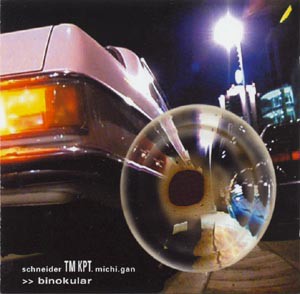 Morrissey was once quoted as saying there was “nothing more repellent than the synthesizer”, but if THE SMITHS had gone electro, would they have sounded like this and Stephen Patrick thrown himself in front of that ten ton truck? Germany’s SCHNEIDER TM aka Dirk Dresselhaus reconstructed ‘There Is A Light That Never Goes Out’ to a series of minimal blips, blops and robotics to configure ‘The Light 3000’ with British producer KPTMICHIGAN.
Morrissey was once quoted as saying there was “nothing more repellent than the synthesizer”, but if THE SMITHS had gone electro, would they have sounded like this and Stephen Patrick thrown himself in front of that ten ton truck? Germany’s SCHNEIDER TM aka Dirk Dresselhaus reconstructed ‘There Is A Light That Never Goes Out’ to a series of minimal blips, blops and robotics to configure ‘The Light 3000’ with British producer KPTMICHIGAN.
Available on the SCHNEIDER TM album ‘Binokular’ via https://mirrorworldmusic.bandcamp.com/
http://www.cityslang.com/schneider-tm/biography
THE DROYDS Take Me I’m Yours (2002)
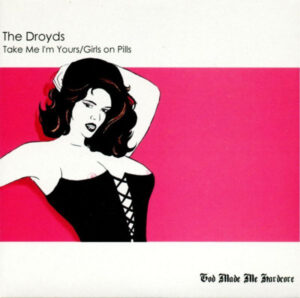 God Made Me Hardcore was a label set-up by Andy Chatterley and Richard Norris for electroclash tracks they had involvement in and as THE DROYDS, they covered ‘Take Me I’m Yours’ was the debut single by SQUEEZE. The original was notable for its use of synths inspired by KRAFTWERK, so the duo reinterpreted it as a full deadpan electronic number that truly revealed its Kling Klang roots.
God Made Me Hardcore was a label set-up by Andy Chatterley and Richard Norris for electroclash tracks they had involvement in and as THE DROYDS, they covered ‘Take Me I’m Yours’ was the debut single by SQUEEZE. The original was notable for its use of synths inspired by KRAFTWERK, so the duo reinterpreted it as a full deadpan electronic number that truly revealed its Kling Klang roots.
Available on the compilation album ‘This Is Hardcore’ (V/A) via God Made Me Hardcore
https://www.discogs.com/release/289143-Various-This-Is-Hardcore
JAY-JAY JOHANSON Automatic Lover (2002)
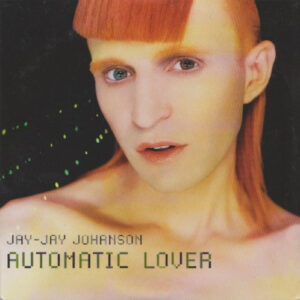 ‘Automatic Lover’ was a 1978 disco-flavoured hit by Dee D Jackson and exploring a more electronic direction after his original trip hop success, the song was perfect foil for his fifth album ‘Antenna’. Filmic with layers of melancholic vocal and vocoder treatments over the gently pulsing electronics, the end result had something of a doomed romantic quality in its beautiful resignation.
‘Automatic Lover’ was a 1978 disco-flavoured hit by Dee D Jackson and exploring a more electronic direction after his original trip hop success, the song was perfect foil for his fifth album ‘Antenna’. Filmic with layers of melancholic vocal and vocoder treatments over the gently pulsing electronics, the end result had something of a doomed romantic quality in its beautiful resignation.
From the JAY-JAY JOHANSON album ‘Antenna’ via BMG Sweden
https://www.facebook.com/jayjayjohanson/
GOLDFRAPP Yes Sir (2003)
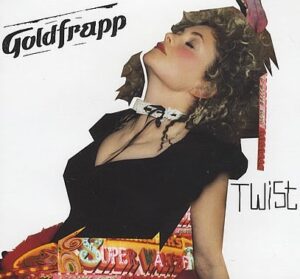 A breathy Euro disco classic made famous by sultry Spanish vocal duo BACCARA, Alison Goldfrapp and Will Gregory’s take on this cheesy but enjoyable disco standard came over like The Cheeky Girls at The Nuremburg rally! Now that’s a horrifying vision! All traces of ‘Yes Sir I Can Boogie’ apart from the original lyrics were rendered missing in action as the stern Ms Goldfrapp played the role of the thigh booted dominatrix on this highly original cover.
A breathy Euro disco classic made famous by sultry Spanish vocal duo BACCARA, Alison Goldfrapp and Will Gregory’s take on this cheesy but enjoyable disco standard came over like The Cheeky Girls at The Nuremburg rally! Now that’s a horrifying vision! All traces of ‘Yes Sir I Can Boogie’ apart from the original lyrics were rendered missing in action as the stern Ms Goldfrapp played the role of the thigh booted dominatrix on this highly original cover.
Available on the GOLDFRAPP single ‘Twist’ via Mute Records
INFANTJOY featuring SARAH NIXEY Ghosts (2005)
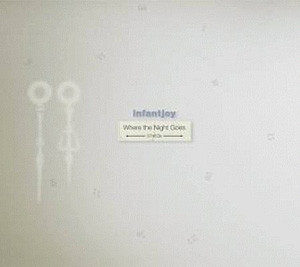 When BLACK BOX RECORDER went on hiatus, Sarah Nixey recorded a beautifully spacey cover of JAPAN’s ‘Ghosts’ with INFANTJOY whose James Banbury became her main collaborator on her 2007 debut solo album ‘Sing Memory’. The duo’s other member was ZTT conceptualist Paul Morley. MIDI-ed up and into the groove, Nixey later also recorded THE HUMAN LEAGUE’s ‘The Black Hit Of Space’.
When BLACK BOX RECORDER went on hiatus, Sarah Nixey recorded a beautifully spacey cover of JAPAN’s ‘Ghosts’ with INFANTJOY whose James Banbury became her main collaborator on her 2007 debut solo album ‘Sing Memory’. The duo’s other member was ZTT conceptualist Paul Morley. MIDI-ed up and into the groove, Nixey later also recorded THE HUMAN LEAGUE’s ‘The Black Hit Of Space’.
Available on the INFANTJOY album ‘With’ via serviceAV
DIE KRUPPS featuring CLIENT Der Amboss (2005)
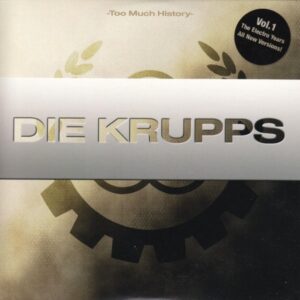 Of this mighty industrialised cover, Ralf Dörper said: “When I first heard ‘The Anvil’ (‘Der Amboss’) by VISAGE, I thought: “what a perfect song for DIE KRUPPS” – it just needed more sweat, more steel. And it was not before 2005 when DIE KRUPPS were asked to play a few 25-year anniversary shows that I remembered ‘Der Amboss’… and as I was a big CLIENT fan at that time, I thought it would be a good opportunity to ask Fräulein B for assistance in the vocal department”.
Of this mighty industrialised cover, Ralf Dörper said: “When I first heard ‘The Anvil’ (‘Der Amboss’) by VISAGE, I thought: “what a perfect song for DIE KRUPPS” – it just needed more sweat, more steel. And it was not before 2005 when DIE KRUPPS were asked to play a few 25-year anniversary shows that I remembered ‘Der Amboss’… and as I was a big CLIENT fan at that time, I thought it would be a good opportunity to ask Fräulein B for assistance in the vocal department”.
Available on the DIE KRUPPS album ‘Too Much History Vol1’ via Metropolis Records
FROST Messages (2007)
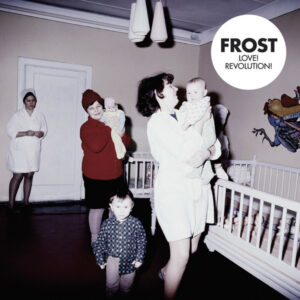 Comprising of Aggie Peterson and Per Martinsen, FROST have described their music as “upbeat space-pop”. Much of their own material like ‘Klong’, ‘Alphabet’ and ‘Sleepwalker’ exuded a perfect soundtrack for those long Nordic nights. Meanwhile their ultra-cool cover of OMD’s ‘Messages’ embraced that wintery atmosphere, while providing a pulsing backbone of icy synths to accompany Peterson’s alluringly nonchalant vocal.
Comprising of Aggie Peterson and Per Martinsen, FROST have described their music as “upbeat space-pop”. Much of their own material like ‘Klong’, ‘Alphabet’ and ‘Sleepwalker’ exuded a perfect soundtrack for those long Nordic nights. Meanwhile their ultra-cool cover of OMD’s ‘Messages’ embraced that wintery atmosphere, while providing a pulsing backbone of icy synths to accompany Peterson’s alluringly nonchalant vocal.
Available on the FROST album ‘Love! Revolution!’ via Frost World Recordings
https://www.facebook.com/frostnorway/
ONETWO Have A Cigar (2007)
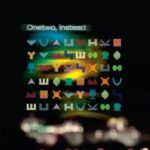 In this “PINK FLOYD Goes To Hollywood” styled rework, Claudia Brücken revisited her ZTT roots with this powerful and danceable version of Roger Waters’ commentary on music business hypocrisy. ‘Have A Cigar’ showed a turn of feistiness and aggression not normally associated with the usually more serene timbres of Claudia Brücken and Paul Humphreys’ ONETWO project. But by welcoming pleasure into the dome, they did a fine cover version.
In this “PINK FLOYD Goes To Hollywood” styled rework, Claudia Brücken revisited her ZTT roots with this powerful and danceable version of Roger Waters’ commentary on music business hypocrisy. ‘Have A Cigar’ showed a turn of feistiness and aggression not normally associated with the usually more serene timbres of Claudia Brücken and Paul Humphreys’ ONETWO project. But by welcoming pleasure into the dome, they did a fine cover version.
Available on the ONETWO album ‘Instead’ via https://theremusic.bandcamp.com/
http://www.theremusic.com/onetwo/onetwo
BLACK NAIL CABARET Umbrella (2008)
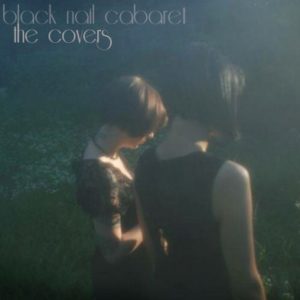 Budapest’s BLACK NAIL CABARET began life as an all-female duo of Emese Illes-Arvai on vocals and Sophie Tarr on keyboards, with their first online offering being a darkwave cover of Rihanna’s ‘Umbrella’. Already very synthy in the Barbadian starlet’s own version, it showcased their brooding form of electro which subsequently impressed enough to earn support slots with COVENANT and CAMOUFLAGE while producing three albums of self-penned material so far.
Budapest’s BLACK NAIL CABARET began life as an all-female duo of Emese Illes-Arvai on vocals and Sophie Tarr on keyboards, with their first online offering being a darkwave cover of Rihanna’s ‘Umbrella’. Already very synthy in the Barbadian starlet’s own version, it showcased their brooding form of electro which subsequently impressed enough to earn support slots with COVENANT and CAMOUFLAGE while producing three albums of self-penned material so far.
Available on the BLACK NAIL CABARET album ‘The Covers’ via https://blacknailcabaret.bandcamp.com/
http://www.blacknailcabaret.com
CHINA CRISIS Starry Eyed (2008)
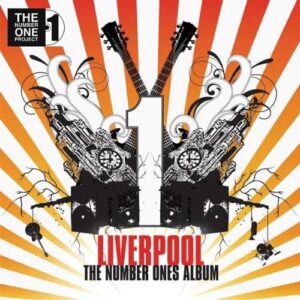 Liverpudlian easy listening crooner Michael Holliday was the second person to have a UK No1 written by Burt Bacharach and Hal David, the first being Perry Como with ‘Magic Moments’. His second UK No1 penned by Earl Shuman and Mort Garson was a romantic guilty pleasure. CHINA CRISIS pledged their Scouse Honour with this jaunty synth / drum machine driven rendition of ‘Starry Eyed’ layered with reverbed synthbass warbles and harmonious vocals.
Liverpudlian easy listening crooner Michael Holliday was the second person to have a UK No1 written by Burt Bacharach and Hal David, the first being Perry Como with ‘Magic Moments’. His second UK No1 penned by Earl Shuman and Mort Garson was a romantic guilty pleasure. CHINA CRISIS pledged their Scouse Honour with this jaunty synth / drum machine driven rendition of ‘Starry Eyed’ layered with reverbed synthbass warbles and harmonious vocals.
Available on the compilation album ‘Liverpool – The Number Ones Album’ (V/A) via EMI Records
www.facebook.com/pages/China-Crisis/295592467251068
LITTLE BOOTS Love Kills (2009)
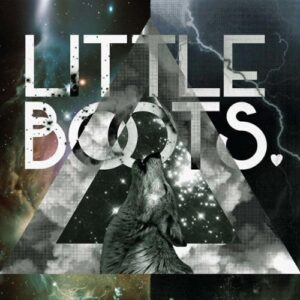 LITTLE BOOTS gave a dynamically poptastic rendition of Giorgio Moroder and Freddie Mercury’s only collaboration from 1984, retaining its poignant melancholic quality while adding a vibrant and danceable electronic slant. The recreation of Richie Zito’s guitar solo on synths was wondrous as was the looser swirly groove. While Blackpool-born Victoria Hesketh didn’t have the voice of Mercury, her wispy innocence added its own touching qualities to ‘Love Kills’.
LITTLE BOOTS gave a dynamically poptastic rendition of Giorgio Moroder and Freddie Mercury’s only collaboration from 1984, retaining its poignant melancholic quality while adding a vibrant and danceable electronic slant. The recreation of Richie Zito’s guitar solo on synths was wondrous as was the looser swirly groove. While Blackpool-born Victoria Hesketh didn’t have the voice of Mercury, her wispy innocence added its own touching qualities to ‘Love Kills’.
Available on the LITTLE BOOTS EP ‘Illuminations’ via Elektra Records
PET SHOP BOYS Viva La Vida (2009)
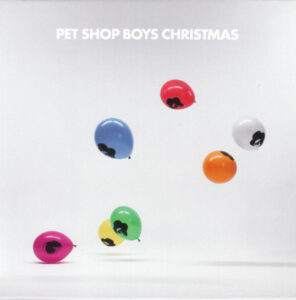 Yuck, it’s Chris Martin and Co but didn’t Neil Tennant and Chris Lowe do well? Merging possibly COLDPLAY’s best song with the synth riff from their own Latino disco romp ‘Domino Dancing’, ‘Viva La Vida’ was turned into a stomping but still anthemic number which perhaps had more touches of affection than PET SHOP BOYS’ marvellous but allegedly two fingers Hi-NRG rendition of U2’s ‘Where The Streets Have No Name’. So altogether now: “Woah-oh, ooh-ooah!”
Yuck, it’s Chris Martin and Co but didn’t Neil Tennant and Chris Lowe do well? Merging possibly COLDPLAY’s best song with the synth riff from their own Latino disco romp ‘Domino Dancing’, ‘Viva La Vida’ was turned into a stomping but still anthemic number which perhaps had more touches of affection than PET SHOP BOYS’ marvellous but allegedly two fingers Hi-NRG rendition of U2’s ‘Where The Streets Have No Name’. So altogether now: “Woah-oh, ooh-ooah!”
Available on the PET SHOP BOYS album ‘Yes: Further Listening 2008-2010’ via EMI Records
DURAN DURAN Boys Keep Swinging (2010)
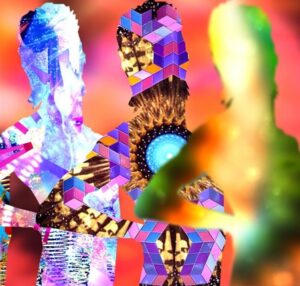 No strangers to raiding the Bowie songbook having previously tackled ‘Fame’ in 1981, DURAN DURAN however blotted their copy book with their 1995 covers LP ‘Thank You’. They refound their stride with the return-to-form album ‘All You Need Is Now’, but just before that, this superb reinterpretation of ‘Boys Keep Swinging’ reconnected them to their New Romantic roots with washes of Nick Rhodes’ swimmy Crumar string machine and John Taylor’s syncopated bass runs.
No strangers to raiding the Bowie songbook having previously tackled ‘Fame’ in 1981, DURAN DURAN however blotted their copy book with their 1995 covers LP ‘Thank You’. They refound their stride with the return-to-form album ‘All You Need Is Now’, but just before that, this superb reinterpretation of ‘Boys Keep Swinging’ reconnected them to their New Romantic roots with washes of Nick Rhodes’ swimmy Crumar string machine and John Taylor’s syncopated bass runs.
Available on the compilation album ‘We Were So Turned On: A Tribute To David Bowie’ (V/A) via Manimal Vinyl
LADYTRON Little Black Angel (2010)
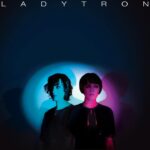 This frantically paced cover of controversial neofolk band DEATH IN JUNE was recorded for the LADYTRON ‘Best Of 00-10’ collection and purposely uncredited. The antithesis of the midtempo atmospherics of ‘Gravity The Seducer’, this cutting four-to-the-floor romp was the last of the quartet’s in-yer-face tracks in a wind down of the harder ‘Velocifero’ era. With the multi-ethnic combo subverting the meaning of ‘Little Black Angel’, it deliberately bore no resemblance to the original.
This frantically paced cover of controversial neofolk band DEATH IN JUNE was recorded for the LADYTRON ‘Best Of 00-10’ collection and purposely uncredited. The antithesis of the midtempo atmospherics of ‘Gravity The Seducer’, this cutting four-to-the-floor romp was the last of the quartet’s in-yer-face tracks in a wind down of the harder ‘Velocifero’ era. With the multi-ethnic combo subverting the meaning of ‘Little Black Angel’, it deliberately bore no resemblance to the original.
Available on the LADYTRON album ‘Best of 00-10’ via Nettwerk Records
GAZELLE TWIN The Eternal (2011)
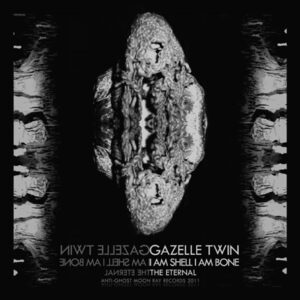 ‘The Eternal’ from ‘Closer’, the final album by JOY DIVISION, was one of the most fragile, funereal collages of beauty ever committed to vinyl. But in 2011, the mysterious Brighton based songstress GAZELLE TWIN reworked this cult classic and made it even more haunting! Replacing the piano motif with eerily chilling synth and holding it together within an echoing sonic cathedral, she paid due respect to the song while adding her own understated operatic stylings.
‘The Eternal’ from ‘Closer’, the final album by JOY DIVISION, was one of the most fragile, funereal collages of beauty ever committed to vinyl. But in 2011, the mysterious Brighton based songstress GAZELLE TWIN reworked this cult classic and made it even more haunting! Replacing the piano motif with eerily chilling synth and holding it together within an echoing sonic cathedral, she paid due respect to the song while adding her own understated operatic stylings.
Available on the GAZELLE TWIN EP ‘I Am Shell I Am Bone’ via Anti-Ghost Moon Ray Records
MIRRORS Something On Your Mind (2011)
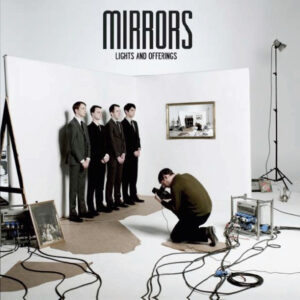 MIRRORS revealed an interesting musical diversion with this haunting take of a rootsy country number originally recorded by Karen Dalton. Written by Dino Valenti of psychedelic rockers QUICKSILVER MESSENGER SERVICE, ‘Something On Your Mind’ was a touching ballad with its tortured yearning suiting the quartet’s pop noir aspirations. Ally Young said: “It was very nice for us to be able to apply our aesthetic to someone else’s song.”
MIRRORS revealed an interesting musical diversion with this haunting take of a rootsy country number originally recorded by Karen Dalton. Written by Dino Valenti of psychedelic rockers QUICKSILVER MESSENGER SERVICE, ‘Something On Your Mind’ was a touching ballad with its tortured yearning suiting the quartet’s pop noir aspirations. Ally Young said: “It was very nice for us to be able to apply our aesthetic to someone else’s song.”
Available on the MIRRORS album ‘Lights & Offerings’ via Skint Records
http://mirrorsofficial.bandcamp.com/
OMD VCR (2011)
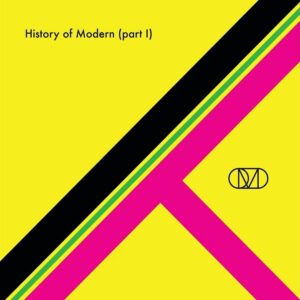 THE XX had a minimalist approach which Andy McCluskey said was “really quite impressive”. This bareness made their material quite well suited for reworking in the style of classic OMD. ‘VCR’ had Paul Humphreys taking charge of the synths while McCluskey dusted off his bass guitar and concentrated on vocals. McCluskey added: “People go ‘how did OMD influence THE XX?’… but have you listened to ‘4-Neu’? Have you listened to some of the really simple, stripped down B-sides?”
THE XX had a minimalist approach which Andy McCluskey said was “really quite impressive”. This bareness made their material quite well suited for reworking in the style of classic OMD. ‘VCR’ had Paul Humphreys taking charge of the synths while McCluskey dusted off his bass guitar and concentrated on vocals. McCluskey added: “People go ‘how did OMD influence THE XX?’… but have you listened to ‘4-Neu’? Have you listened to some of the really simple, stripped down B-sides?”
Available on the OMD EP ‘History Of Modern (Part I)’ via Blue Noise
WELLE: ERDBALL Ein Bißchen Frieden (2011)
 Using a logo that was based on the DDR motor company that produced the Trabant, when German chiptune quartet WELLE: ERDBALL made their tenth album ‘Der Kalte Krieg’, they included numerous German schlager style covers as an ironic nostalgic trip back to the nuclear angst of that era. One of those was a joyous synthpop cover of ‘Ein Bißchen Frieden’, the 1982 Eurovision Song Contest winner sung by Nicole, known in its English version as ‘A Little Peace’.
Using a logo that was based on the DDR motor company that produced the Trabant, when German chiptune quartet WELLE: ERDBALL made their tenth album ‘Der Kalte Krieg’, they included numerous German schlager style covers as an ironic nostalgic trip back to the nuclear angst of that era. One of those was a joyous synthpop cover of ‘Ein Bißchen Frieden’, the 1982 Eurovision Song Contest winner sung by Nicole, known in its English version as ‘A Little Peace’.
Available on the WELLE: ERDBALL album ‘Der Kalte Krieg’ via Synthetic Symphony
https://www.facebook.com/WelleErdball
COMPUTE Goodbye (2012)
 Folk-oriented songs are just made for electronic reinventions and as COMPUTE, Sweden’s Ulrika Mild did just that on ‘Goodbye’, a song made famous by Mary Hopkin which was written by Paul McCartney who had also produced her debut hit ‘Those Were the Days’. The track formed part of a charity compilation under the supervision of Eddie Bengtsson from PAGE who covered ‘Cos I Luv U’ while it also included versions of ‘Silver Machine’ and ‘Heart Of Gold’.
Folk-oriented songs are just made for electronic reinventions and as COMPUTE, Sweden’s Ulrika Mild did just that on ‘Goodbye’, a song made famous by Mary Hopkin which was written by Paul McCartney who had also produced her debut hit ‘Those Were the Days’. The track formed part of a charity compilation under the supervision of Eddie Bengtsson from PAGE who covered ‘Cos I Luv U’ while it also included versions of ‘Silver Machine’ and ‘Heart Of Gold’.
Available on the compilation album ‘Friends Of Electronically Yours Present The Seventies Revisited’ (V/A) via Electronically Yours
https://www.facebook.com/computopia
SIN COS TAN My Blue Heaven (2012)
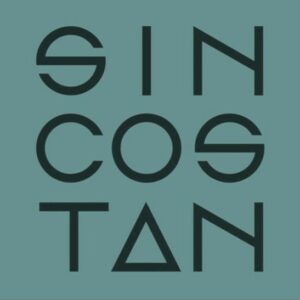 ‘My Blue Heaven’ was a popular song written by Walter Donaldson with lyrics by George A Whiting. A 1927 song used in the Ziegfeld Follies and a hit crooner Gene Austin, this atmospheric synth reinterpretation by the Finnish duo of Juho Paalosmaa and Jori Hulkkonen was recorded to celebrate the end of their first year as SIN COS TAN as a seasonal gift following the acclaimed for their self-titled debut album.
‘My Blue Heaven’ was a popular song written by Walter Donaldson with lyrics by George A Whiting. A 1927 song used in the Ziegfeld Follies and a hit crooner Gene Austin, this atmospheric synth reinterpretation by the Finnish duo of Juho Paalosmaa and Jori Hulkkonen was recorded to celebrate the end of their first year as SIN COS TAN as a seasonal gift following the acclaimed for their self-titled debut album.
Available as a free download from https://soundcloud.com/sugarcane/sin-cos-tan-my-blue-heaven
https://www.facebook.com/homeofsincostan
I SPEAK MACHINE My Sex (2013)
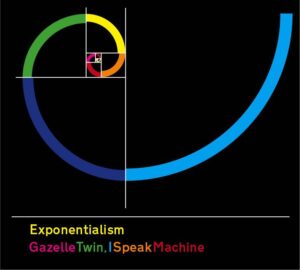 As I SPEAK MACHINE, Tara Busch has been known for her haunting and downright bizarre live covers of songs as diverse as ‘Cars’, ‘Our House’, ‘The Sound Of Silence’ and ‘Ticket To Ride’. For a John Foxx tribute EP which also featured GAZELLE TWIN, she turned ‘My Sex’, the closing number from the debut ULTRAVOX! long player, into a cacophony of wailing soprano and dystopian synths that was more than suitable for a horror flick.
As I SPEAK MACHINE, Tara Busch has been known for her haunting and downright bizarre live covers of songs as diverse as ‘Cars’, ‘Our House’, ‘The Sound Of Silence’ and ‘Ticket To Ride’. For a John Foxx tribute EP which also featured GAZELLE TWIN, she turned ‘My Sex’, the closing number from the debut ULTRAVOX! long player, into a cacophony of wailing soprano and dystopian synths that was more than suitable for a horror flick.
Available on the EP ‘Exponentialism’ (V/A) via Metamatic Records
NOBLESSE OBLIGE Hotel California (2013)
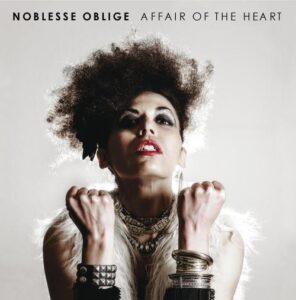 French theatrical performer Valerie Renay and German producer Sebastian Lee Philipp are NOBLESSE OBLIGE. Together, they specialise in a brand of abstract Weimer cabaret tinged with a dose of electro Chanson. Their lengthy funereal deadpan cover of THE EAGLES ‘Hotel California’ highlighted the chilling subtext of the lyrics to its macabre conclusion! The synthesizer substitution of the original’s iconic twin guitar solo could be seen as total genius or sacrilege!
French theatrical performer Valerie Renay and German producer Sebastian Lee Philipp are NOBLESSE OBLIGE. Together, they specialise in a brand of abstract Weimer cabaret tinged with a dose of electro Chanson. Their lengthy funereal deadpan cover of THE EAGLES ‘Hotel California’ highlighted the chilling subtext of the lyrics to its macabre conclusion! The synthesizer substitution of the original’s iconic twin guitar solo could be seen as total genius or sacrilege!
Available on the NOBLESSE OBLIGE album ‘Affair Of The Heart’ via Repo Records
http://www.noblesseoblige.co.uk/
I AM SNOW ANGEL I’m On Fire (2014)
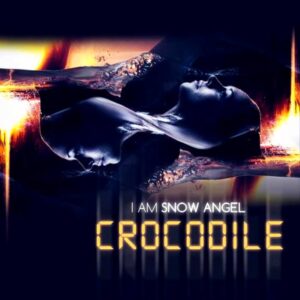 I AM SNOW ANGEL is the project of Brooklyn based producer Julie Kathryn; her debut album ‘Crocodile’ was a lush sounding affair and could easily be mistaken as a product of Scandinavia were it not for her distinctly Trans-Atlantic drawl. Already full of surprises, to close the long player, out popped a countrified drum ‘n’ bass take of Bruce Springsteen’s ‘I’m On Fire’! Quite what The Boss would have made of it, no-one is sure but it was quietly subversive…
I AM SNOW ANGEL is the project of Brooklyn based producer Julie Kathryn; her debut album ‘Crocodile’ was a lush sounding affair and could easily be mistaken as a product of Scandinavia were it not for her distinctly Trans-Atlantic drawl. Already full of surprises, to close the long player, out popped a countrified drum ‘n’ bass take of Bruce Springsteen’s ‘I’m On Fire’! Quite what The Boss would have made of it, no-one is sure but it was quietly subversive…
Available on the I AM SNOW ANGEL album ‘Crocodile’ via I Am Snow Angel
MACHINISTA Heroes (2014)
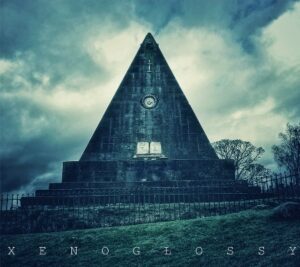 Reinterpreting Bowie is fraught with the possibility of negative feedback and MACHINISTA taking on ‘Heroes’ set tongues wagging. Recorded as the duo’s calling card when experienced Swedish musicians John Lindqwister and Richard Flow first came together, electronic pulses combined with assorted synthetic textures which when amalgamated with Lindqwister’s spirited vocal, produced a respectful and yes, good version.
Reinterpreting Bowie is fraught with the possibility of negative feedback and MACHINISTA taking on ‘Heroes’ set tongues wagging. Recorded as the duo’s calling card when experienced Swedish musicians John Lindqwister and Richard Flow first came together, electronic pulses combined with assorted synthetic textures which when amalgamated with Lindqwister’s spirited vocal, produced a respectful and yes, good version.
Available on the MACHINISTA album ‘Xenoglossy’ via Analogue Trash
http://www.machinistamusic.com
NIGHT CLUB Need You Tonight (2014)
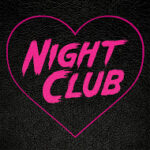 Comprising of frisky vocalist Emily Kavanaugh and moody producer Mark Brooks, NIGHT CLUB simply cut to the chase with their enjoyable electronic cover of INXS’ ‘Need You Tonight’. Here, the familiar guitar riff was amusingly transposed into a series of synth stabs before mutating into a mutant Morse code. It wasn’t rock ‘n’ roll but we liked it! Purists were horrified, but history has proved the best cover versions always do a spot of genre and instrumentation hopping.
Comprising of frisky vocalist Emily Kavanaugh and moody producer Mark Brooks, NIGHT CLUB simply cut to the chase with their enjoyable electronic cover of INXS’ ‘Need You Tonight’. Here, the familiar guitar riff was amusingly transposed into a series of synth stabs before mutating into a mutant Morse code. It wasn’t rock ‘n’ roll but we liked it! Purists were horrified, but history has proved the best cover versions always do a spot of genre and instrumentation hopping.
Available on the NIGHT CLUB EP ‘Black Leather Heart’ via http://nightclubband.com/album/black-leather-heart
ELECTRICITYCLUB.CO.UK’s ‘A Fistful Of Electronic Covers’ playlist featuring reinterpretations through the ages can be heard via Spotify at https://open.spotify.com/playlist/12XFwF5iuLj3Jl7Tj2GTpE
Text by Chi Ming Lai
10th March 2025


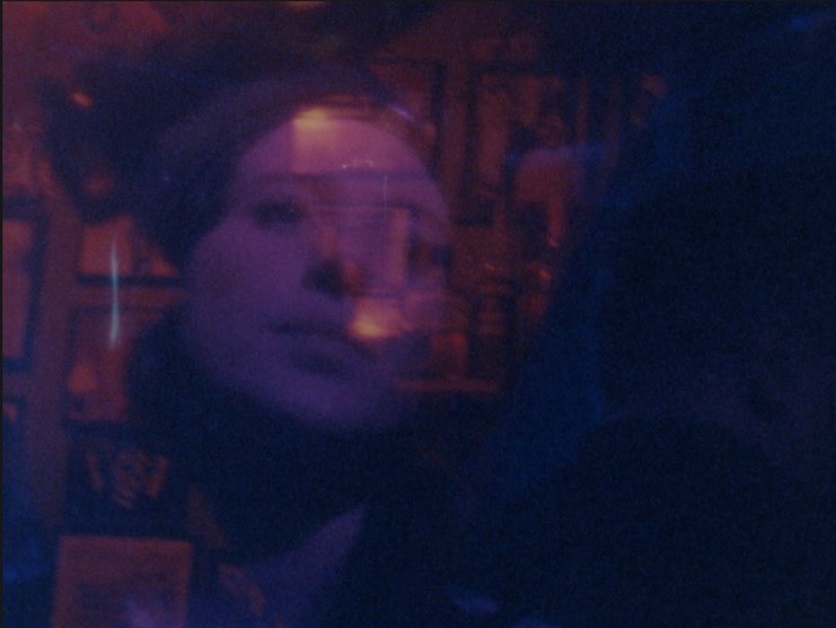
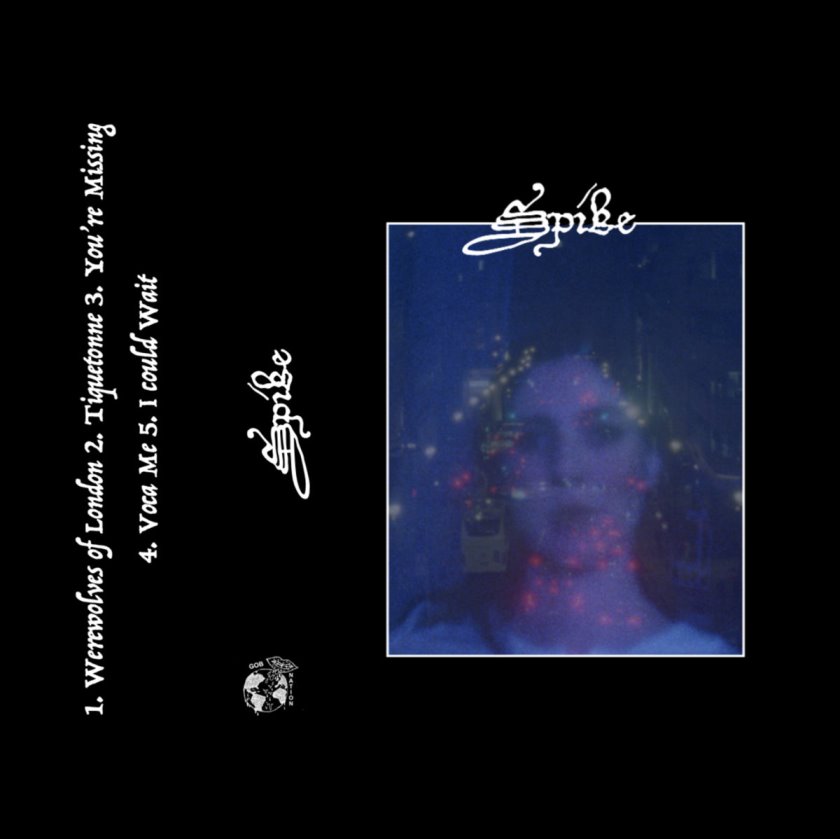

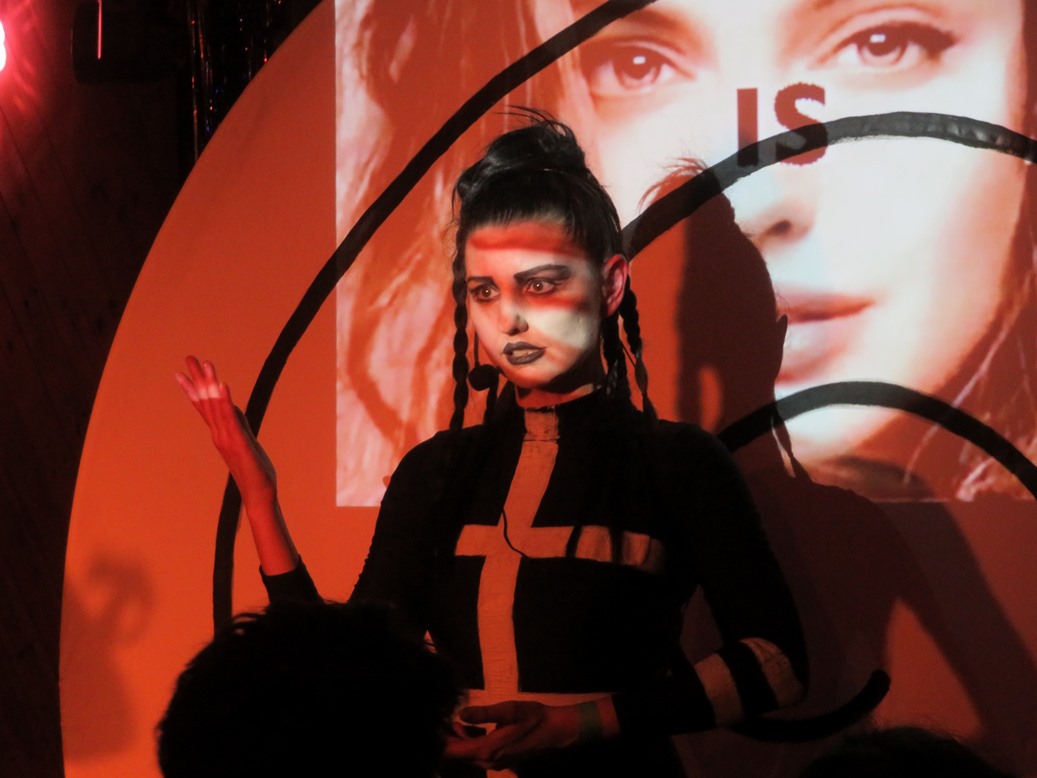
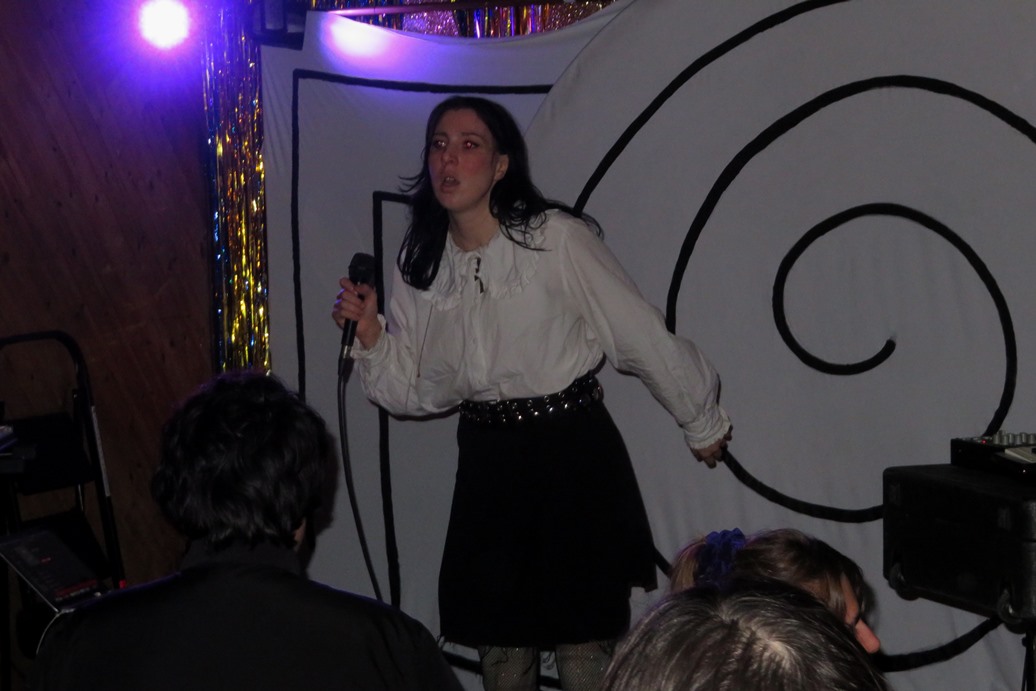
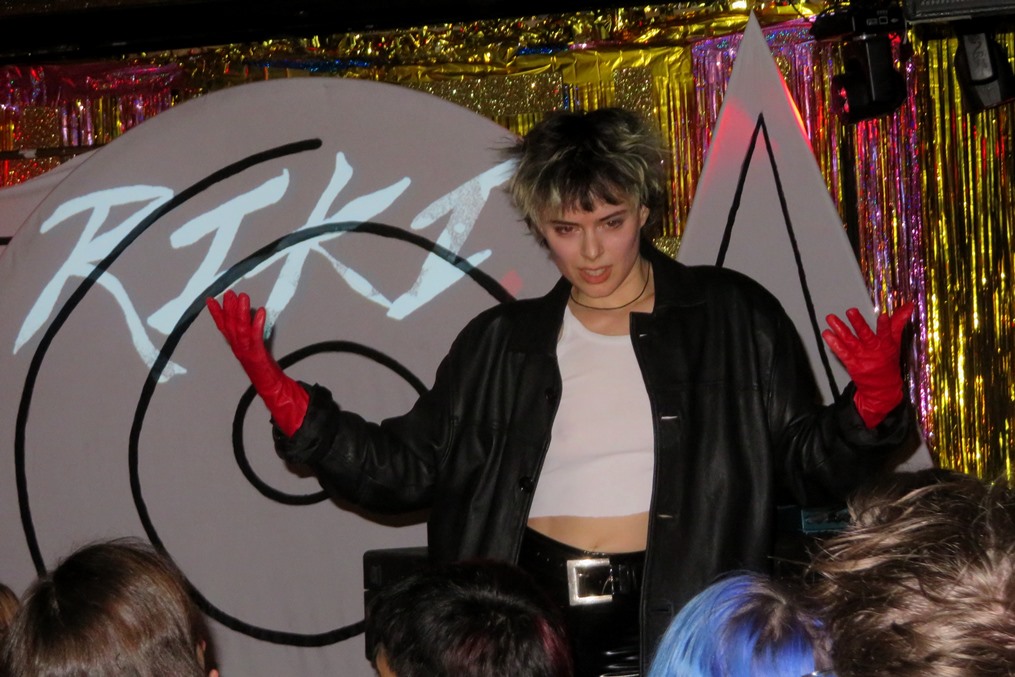
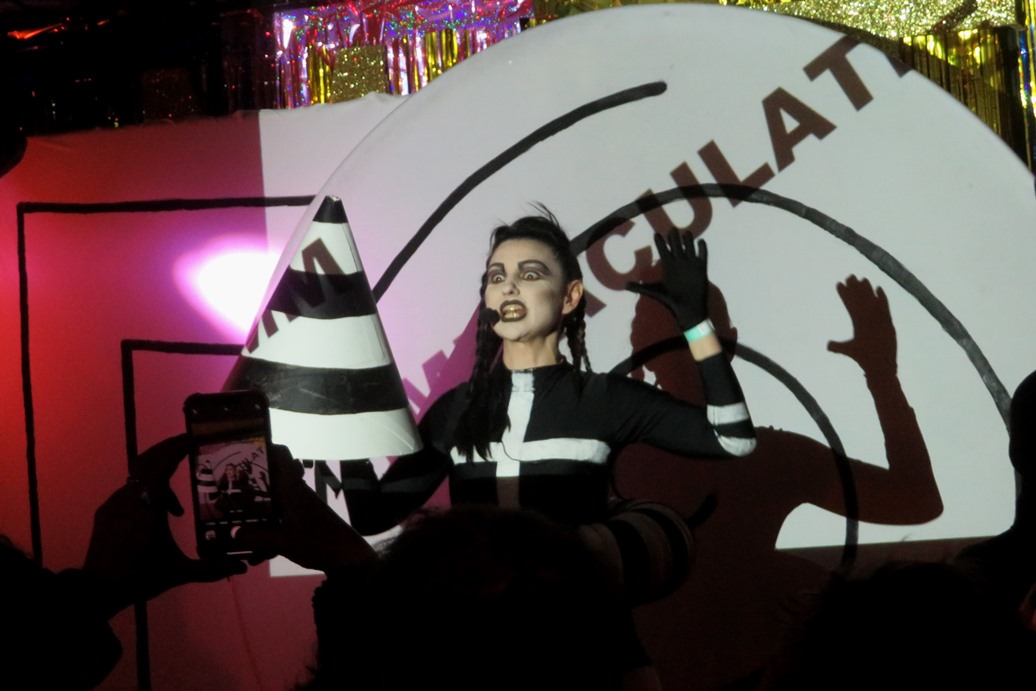
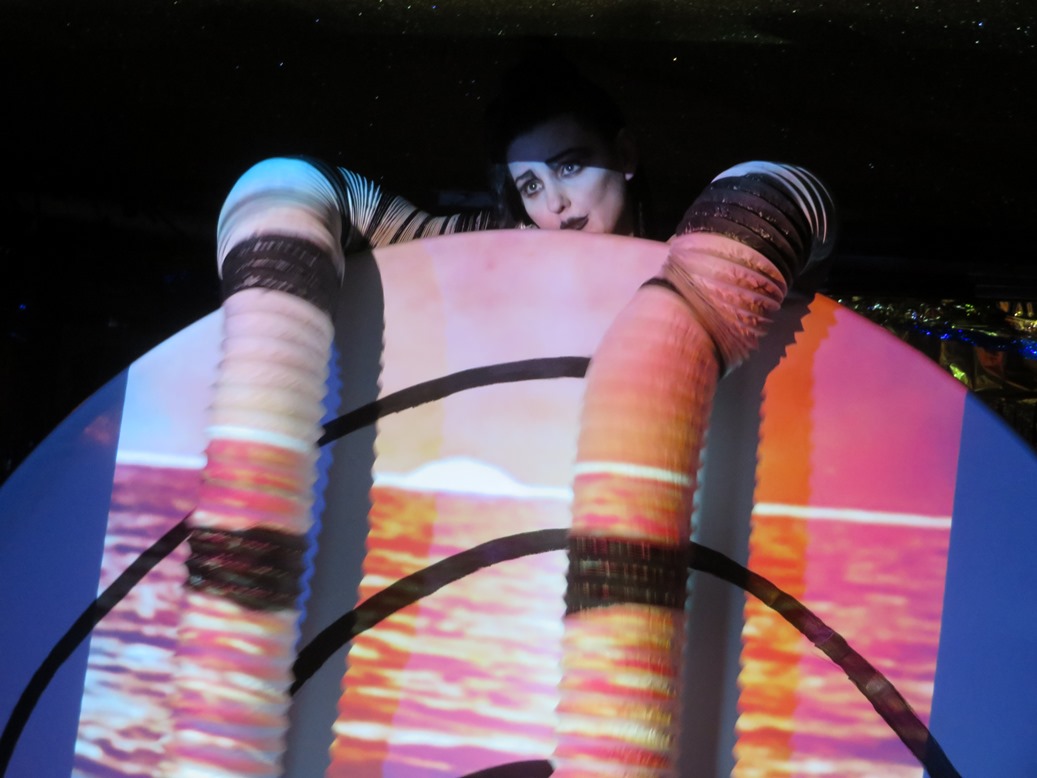
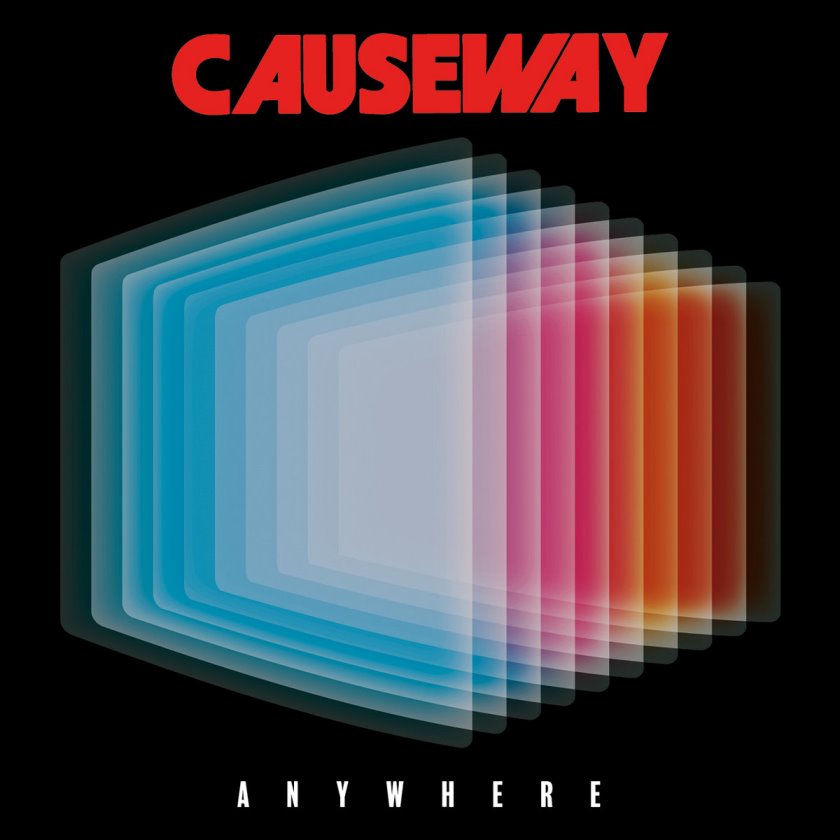
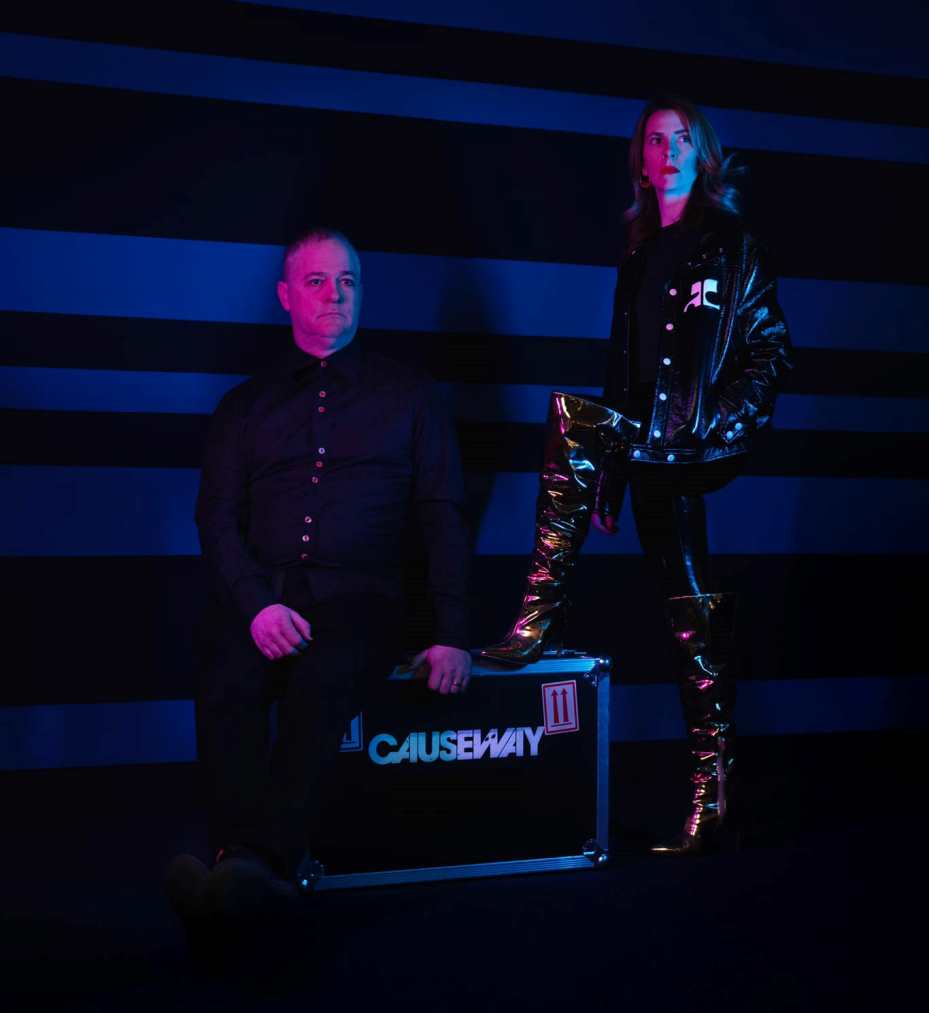
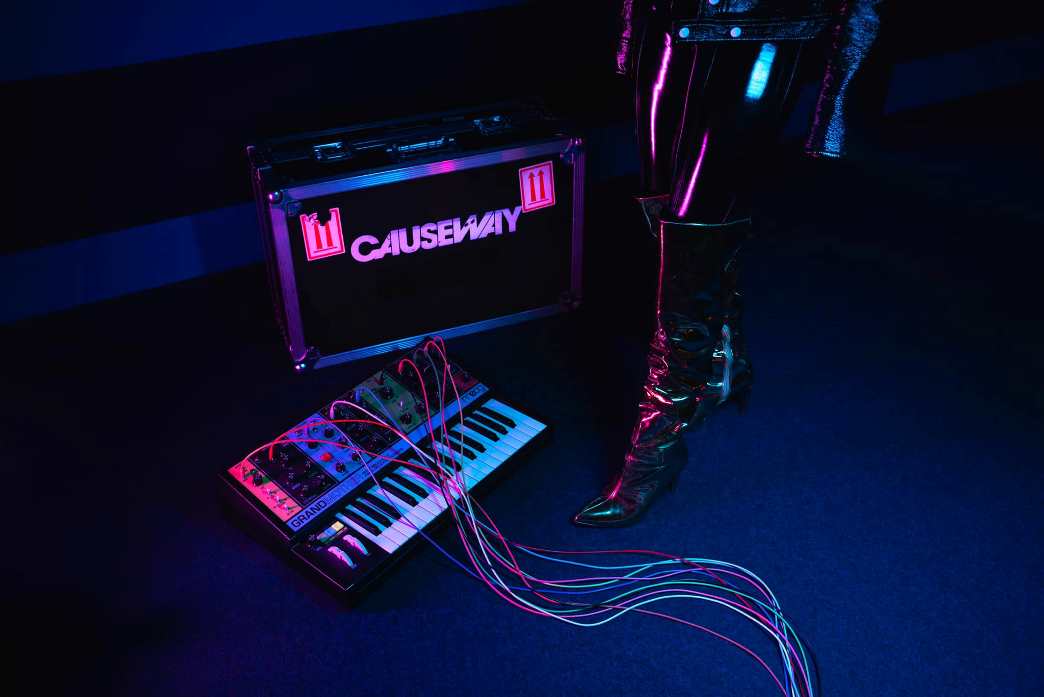
Follow Us!